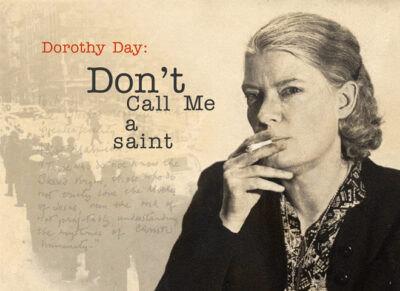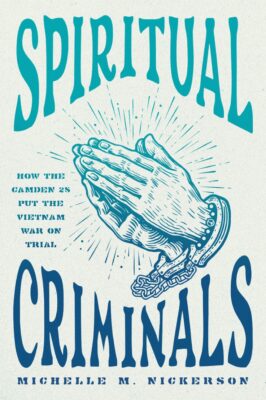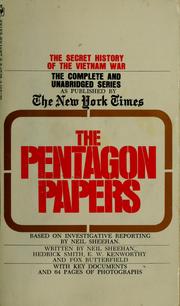Editor's Note
Post #4 in an ongoing series related to Michelle Nickerson’s Spiritual Criminals.
Dorothy Day is a central character in Spiritual Criminals in terms of what some might call ‘spiritual formation’. The index entry for her looks brief (just 12 pages noted), but her shadow looms large over the actors behind the Camden 28 action. Day was in no way a material causal agent, per se. In fact, she originally spoke out against the draft board actions—before coming around to their desired ends. Nevertheless, her causes were shared Catholic Leftists and Radicals. Dorothy Day remains, today, an important figure for Catholic progressives—though she has also been celebrated and appropriated by conservatives for other reasons. What follows is a recounting of how Michelle Nickerson covers Day in Spiritual Criminals.
Nickerson introduces us to Day early in the text. Day is posited as an example, with her famous spiritual endeavor, the Catholic Worker Movement, for Catholics seeking “to understand their Christian obligations to humanity” (p. 7). The book seeks to carve out a place for Catholic activists who would become radicals by reminding the reader that many in the New Left respected “serious contemplation” and had a “reverence of the metaphysical.” For all Christian activists, this also mean “respect for the sacred” (p. 7). Day provides a crucial bridge for Catholics, along with Thomas Merton.
The reader’s next textual encounter with Day occurs during an in-depth discussion of Merton in chapter one. Merton arose as a key figure, chronologically alongside of Cardinal Spellman, as a Catholic who helped articulate key themes in Catholic Social Teaching. In their writings, Merton and Day introduce pacifism to a large number of Cold War Catholics. They shared many letters with each other. In the context of Merton, Nickerson adds that Peter Maurin and Day founded the first Catholic Worker house in 1933. As an experienced activist, Day becomes, with Merton, “an influential elder and mentor to the emerging generation of activists” (p. 32).
In the next chapter (two, “Civil Disobedience”), Day and Catholic Workers get their own profile. Day is a bridge to Catholic nonviolent activism in the Civil Rights Movement the late 1950s and 1960s, and against the Vietnam War all through the 1960s and after. Nickerson uses Day to get the reader directly to many of the activists who would be a part of the Camden 28.

This is the image of a poster for the 2006 documentary titled, *Dorothy Day: Don’t Call Me a Saint*—directed and produced by Claudia Larson.
All of the standard events and topics regarding Day and the Catholic Worker movement are succinctly covered. This includes a few early biographical details about Day (and Maurin) and the Catholic Worker ethic and structure—i.e., nonhierarchial communal houses, antistatist, tax-avoiding, anticapitalist, members living with the poorest of the poor, voluntary poverty, authentic hospitality, shared meals, producing the Catholic Worker newspaper, and peacemaking (pp. 38-40).
Maurin added an ‘ideas element’. He was continually desirous of creating worker intellectuals. His passion lay in pursuing, daily and weekly, the “clarification of thought” in meetings and presentations at Catholic Worker houses. Topics of those gatherings included the saints, racism, war, pacifism, theology, the labor movement, politics, and Thomism (p. 40). The last was a popular topic in the 1930s and 1940s, courtesy of the encouragement of bishops and the papacy, and the concurrent work of Jacques Maritain.[1] All of this was done over lots of cigarettes (Day was a smoker, hence the image to the right) and massive amounts of coffee, even while Catholic Workers encourage regular mass attendance, confession, and prayer (p. 40).
Dorothy Day’s intense practice of pacifism provided a binding thread for mid-century Catholics. It arose for her in the context of World War I, and continued with WWII, the Korean War, and, of course, the Vietnam War. As Nickerson notes in relation to WWII, Day “expressed her dissent forcefully and often in the pages of the flagship Catholic Worker” (p. 40). This gained her notoriety but also enemies—even within the Catholic Worker Movement. In her 1952 autobiography, The Long Loneliness, she said “It is a matter of grief to me that most of those who are Catholic Workers are not pacificists.” She added that “there were a very great many who had seemed to agree with us [but] who did not realize for years that The Catholic Worker position implicated them.”[2] Her Catholic Worker allies and friends suffered, as subscriptions to the Catholic Worker dropped from 150,000 to 60,000 and many of their houses of hospitality either closed or were in turmoil (p. 40). At one point during WWII, the Catholic Worker Movement was on an FBI list of “potential subversive organizations.”[3]
Nickerson documents that Day wrote against French involvement in “Indochina” as early as May 1954. She had labeled their meddling as an imperialistic occupation (p. 41). The year 1954 was the same one that President Eisenhower sent “advisers” to the country. In her Catholic Worker reflection, Day day spoke of an obscure priest, Theophane Venard, who had been martyred in Indochina in the nineteenth century. In Nickerson’s relay of Day’s article, “the young priest enthusiastically signed up to be part of the spiritual enterprise” of missionary work there, “but eventually realized he was an instrument in [the] exploitation and demise” of the country’s native people”—“sacrificing the livelihood of residents to profiteers” (p. 42). Day understood the intersections of warmongering, imperialism, capitalism, and oppression. Her track record of writing against interference in Vietnam earned her mentor points with the rising generation of activists.

Michelle Nickerson, *Spiritual Criminals: How the Camden 28 Put the Vietnam War on Trial* (University of Chicago Press, 2024)
In the same time period, Spiritual Criminals recounts that Dorothy Day exhibited a deep respect for the public work of Martin Luther King, Jr. as soon as he arrived on the national scene. In Nickerson’s words, Day “harmonized Catholic Social Justice [Teaching] with the racial justice teachings of the southern freedom struggle” (p. 42).
A large part of that harmonization occurred through the teachings of Mahatma Gandhi. With King and other Christian leaders such as A.J. Muste, Day and Thomas Merton promoted nonviolent resistance. In 1956 he said—and Nickerson provides this quote—that “Christ showed us the way and Gandhi in India show it could work” (p. 42). Although King did not mention Gandhi in his 1963 Letter from Birmingham Jail, he talked about the Gandhian idea of “direct action.” Just over a decade later Day reflected that Catholic Workers were “followers of Gandhi in..[the] struggle to build a spirit of nonviolence” (p. 42).
Nickerson calls Day an “abiding influence” on many draft board raiders. The key connection was the absolute commitment to nonviolence. Catholic leftists and raiders also appreciated the Catholic Worker Movement’s decentralization and radical sense of equality (p. 42). Daniel Berrigan, for instance, in his teaching capacity, regularly introduced his students to a New York Catholic Worker house. Later, in 1986, he reflected that Day “became my friend and the friend of my family.” That friendship served “to spur our moral and spiritual development” (p. 42). In a superlative declaration of influence, his brother Philip Berrigan stated that Day influenced Philip “‘more than all the theologians’ by teaching him how human suffering and poverty related to ‘war-making’” (p. 43). Apart from the Berrigans, Nickerson documents that, among Camden 28 participants, some had stayed at Catholic Worker houses or had read her published works.
While the admiration was generally mutual, one of Day’s reservations about the draft board raids was the question of property destruction as a form of violence. Her initial position was that it was. Nickerson relays that Day saw parallels between the post-WWI Red Scare raids on her offices at The Masses and The Liberator and the actions of the Berrigans and the draft board raiders (p. 43).[4] Years later Day would change her mind. With time and reflection she would praise “the brothers for their creative witness” and call that witness “an act of prayer” (p. 43).

This is the cover of the 1971 Bantam Books paperback edition of the Pentagon Papers
In 1972, Day saw firsthand the power of one kind of creative witness. Michael Doyle, then a priest and a member of the Camden 28, used ashes on Ash Wednesday made “by burning the Pentagon Papers” instead of the traditional ones made from palm leaves. Doyle invited participants to see fully “the death they symbolize and take upon ourselves the burden of guilt” that these ashes represent. Day did not participate in Doyle’s event, but did attend a similar one that took place in a basement chapel at Philadelphia’s LaSalle University. She called that liturgical event “very beautiful” (pp. 134-136).
To wrap this up, Nickerson reminds us that the mid and late-century Catholic Left—inclusive of Day, the Berrigans, Catholic Workers, and the Camden 28—was held together by a few independent, progressive, and liberal print media publications. The Catholic Worker was one, of course, but also the National Catholic Reporter newspaper, as well as Commonweal and America magazines. Day’s writings appeared in Commonweal, at times. These publications offered space for dissent, controversial ideas, prophetic witness, and the discussion of how Catholic Social Teaching applied in various contexts. Dorothy Day contributed greatly to dynamism and thoughtfulness of that network, sometimes directly through her written work and sometimes as inspiration to others. Through her letters and work, she participated in the spiritual formation of the Camden 28.
———————————————————————
Notes
[1] See Philip Gleason’s Contending with Modernity: Catholic Higher Education in the Twentieth Century (Oxford, 1995) for more on Thomism in the 1920-1950 period, especially chapters 5-6
[2] Dorothy Day, The Long Loneliness (NY: HarperSanFrancisco, 1997; 1952), 264, 272.
[3] John Loughery and Blythe Randolph, Dorothy Day (NY: Simon & Schuster, 2020), 225, 231.
[4] Day, 67-69, 83-84, 87.

0